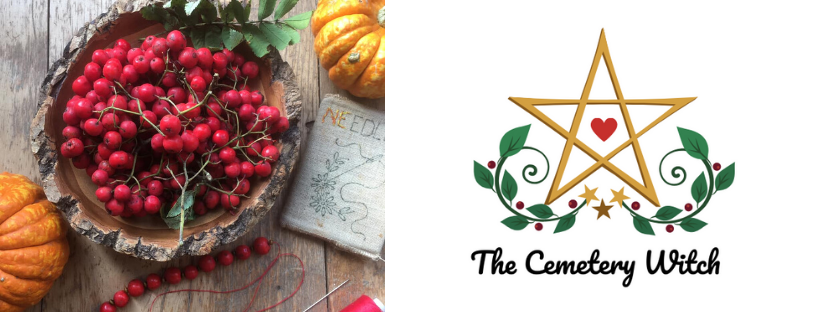Thursday 29 July 2021
Poppy Magick: Correspondences
Wednesday 28 July 2021
Witchcraft Books: Witch Book Wednesday
NEXT - Witchcraft Books: Witch Stack Sunday
NEXT - Review: Of Blood & Bones by Kate Freuler
Tuesday 27 July 2021
Fabulous Folklore: Wolfsbane
Monday 26 July 2021
Simple Magick: Baphomet Explained
NEXT - Simple Magick: Birthday Rituals
NEXT - Simple Magick: 6 Simple Snow Spells
NEXT - Autumn Equinox Blessings!
Thursday 15 July 2021
Fabulous Folklore: The Leicester Chambermaid
The entire inn erupted with her cleverness. The story spread around the town, where it has been told for many years, as warning to all parties that ALL things come at a price, and if it seems too good to be true, it probably is!
NEXT - Fabulous Folklore: The Tomte
NEXT - Fabulous Folklore: The Wicker Man
NEXT - Fabulous Folklore: Hag Stones
Tuesday 13 July 2021
Fabulous Folklore: Horseshoe Magick
Monday 12 July 2021
Review: Witchy Birthday Cake by Shannon Holdsworth
Friday 9 July 2021
Fabulous Folklore: The Witches of Belvoir
“Surely... God will choke me on this bread if I am guilty!”
It was 1613, and in Langham, Rutland, lived Joan Flowers. She had two daughters, Philippa and Margaret, who worked for the Earl of Rutland who was seated at Belvoir Castle.
Philippa helped in the nursery and Margaret was a poultry keeper and laundress until she was caught stealing eggs, and was dismissed from service. The Countess of Rutland refused to give her a character reference which meant she would be unable to find further employment with other local dignitaries.
Joan Flowers was absolutely enraged. Despite being poor she had built up good standing within her community, and she was angry that her daughter would be treated this way.
She gathered her small coven. Along with Ellen Green of Stathern, Joan Willimott of Goadby, and Anne Baker of Bottesford, and her daughters; the six women climbed to the top of Blackberry Hill, a sinister spot rumoured to be a place of malevolent magick. Here they made a pact with the Devil that revenge would be taken on the Earl and Countess of Rutland, and their three children.
Philippa provided a glove belonging to Lord Ross, Henry Manners, their young son. Joan dipped it in boiling water and rubbed it along the back of her familiar, a black cat called Rutterkin, before pricking it with pins. A week later the child became ill and died. Joan took feathers from the quilt of the Earl and Countess, and boiled the feathers, mixing them with blood, declaring “may they have no more children.”
The same was done with Francis Manners. He fell sick, but recovered. The witches were angry, and resorted to burying his glove in a dung heap, whereby Francis would fade as the glove decayed. Katherine Manners also started looking ill.
The witches were not secretive about what they were doing, and the news of the curse soon made it back to Belvoir Castle. In 1618, all six women were arrested and imprisoned at Lincoln Gaol. After questioning they were taken to the Lincoln Assizes. Joan Flowers maintained she was innocent, despite the evidence that was brought against her, and despite the boasting she had done.
In 1619, Joan stood before a packed court, having asked for bread to be supplied, and exclaimed in front of an audience sat on tenterhooks:
“Surely... God will choke me on this bread if I am guilty!”
She took a bite of the bread... and choked to death.
Joan Flowers’ daughters were found guilty and hanged at Lincoln Castle. It is not sure what happened to the others as it was not recorded, but their deaths did not save Francis Manners who died shortly after in 1620.
A memorial to the Earl and his family can be found at Bottesford Church:
“He had two sonnes, both which dyed in their infancy by wicked practice and sorcerye”
Footnote: There is evidence to suggest that the Flower family were set up. The family were disliked by the staff at Belvoir Castle, and despite being herbal healers were seen in their local community as obnoxious and arrogant. Many witch trials involved local squabbles. There is evidence to suggest that the boys were actually put to death by the Duke of Buckingham, who wanted to marry the Earl of Rutland’s daughter so that he could inherit the Earl’s fortune. It is said that local people were scared of the Flowers family, but we must consider that these were poor, uneducated women who had to defend themselves in court, with the average trial lasting no more than 20 minutes. Joan Flowers is buried at the crossroads in Ancaster.
Thursday 8 July 2021
Lupin Magick: 12 Correspondences for Growth
Wednesday 7 July 2021
Fabulous Folklore: Bird’s Foot Trefoil
Tuesday 6 July 2021
Simple Magick: Birthday Rituals
NEXT - Simple Magick: Experiencing The Land Wights
NEXT - Simple Magick: 10 Easy Witchy Self-Care Activities
NEXT - Poppy Magick: Correspondences
Monday 5 July 2021
Simple Magick: Experiencing the Land Wights
NEXT - Simple Magick: 9 Uses For Graveyard Dirt
NEXT - Simple Magick: Horse Brasses
NEXT - Natural Remedies: Stinging Nettle & Rosemary Hair Rinse
